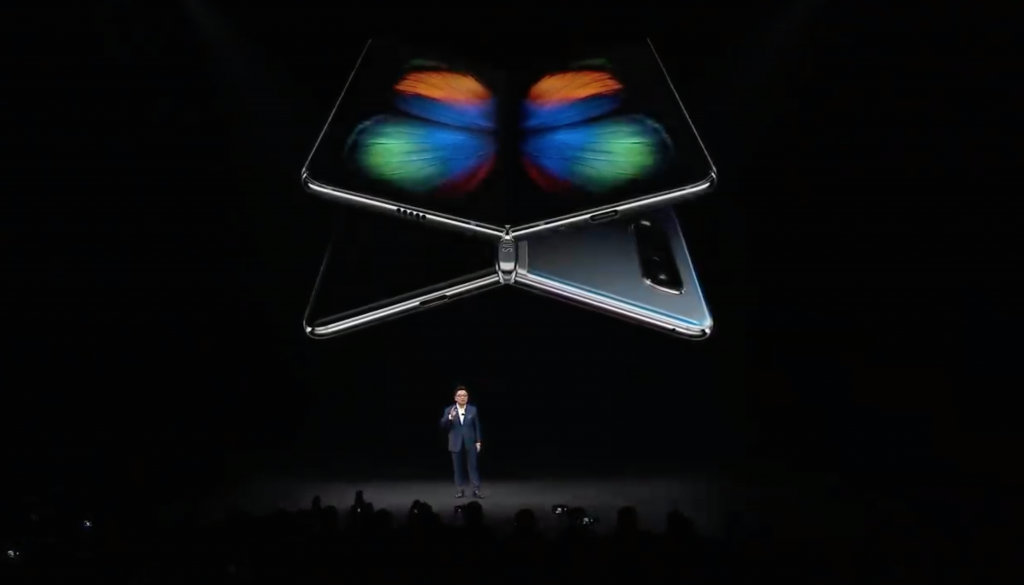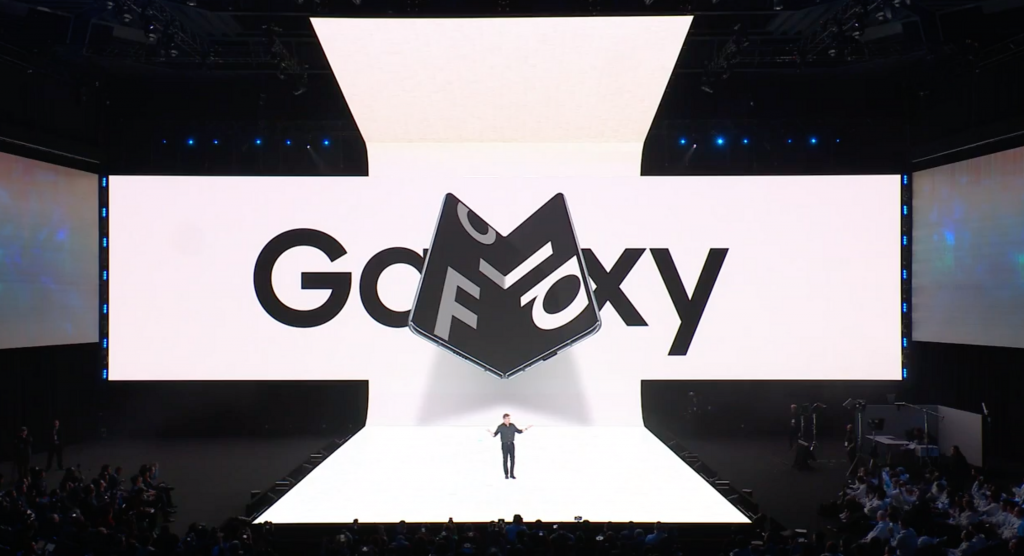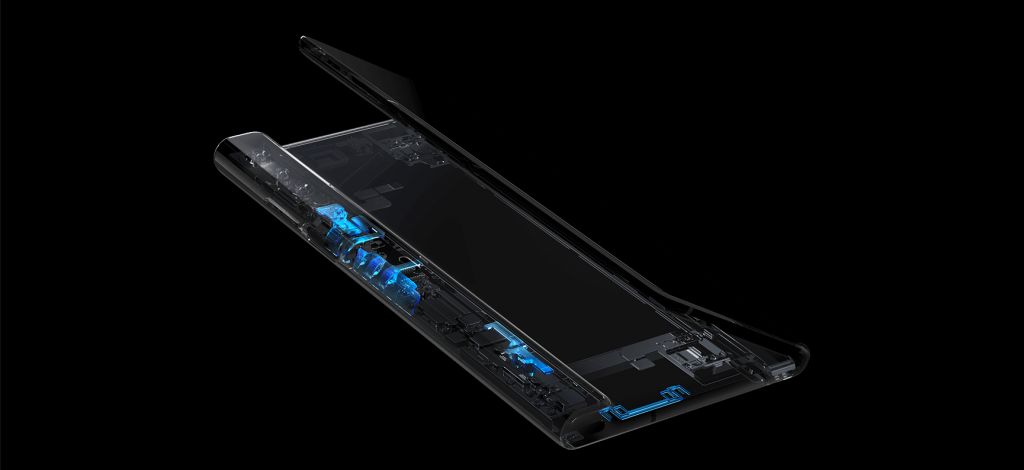Tech journalists are a jaded bunch, and few things in recent years have made us feel more jaded than phone launches. Oh look, we exclaim, it’s… another rectangle of glass. Sure, the camera count has grown, the bezels have shrunken, and the fingerprint sensors have, well, moved all over the place before settling beneath the ever-higher-res displays. Yawn. But in the last week we’ve been wowed. Twice. And it’s all thanks to foldable phones.
First Samsung and then Huawei unveiled phones-cum-tablets with bendy screens. They’re not the first companies to make bendable panels — consider Royole’s crummy, budget-looking FlexPai and on the opposite end of the spectrum, LG’s astronomically priced, but astoundingly cool, roll-up OLED TVs from CES — but they’re the first household-name companies to do so and, realistically, their devices are the first one’s we’re ever likely to handle.
You’d be mad to buy either, but we’ll get to that. First, a recap.
Samsung overshadows its own S10
Last week, Samsung got out in front of the inevitable mayhem of Mobile World Congress (and stole some thunder) by unveiling four new S10 devices (the S10e, S10, S10 Plus and S10 5G). It being the 10th anniversary of the S range and all, expectations were high. And Samsung didn’t disappoint, though the excitement didn’t come from the devices most Samsung fans might actually buy. Instead, it came from the Samsung Galaxy Fold.
At the South African launch event the media (and the rest of Samsung’s guests, whoever they were) were made to queue, give up their cameras and phones, and file into a carefully lit and decorated room where fresh-faced youths handed over one of eight Galaxy Fold devices with the white-gloved pomp and ceremony usually reserved for antiquities.
 For a few, all-too-brief minutes we got to open, close, rotate, prod and scrutinise pre-production Folds. And pre-production they were. The master of ceremonies reminded the room of this more than once, and reminded us specifically when he saw us running a finger along the unfolded display’s subtly — but unmistakably — indented centre seam. “That’ll be perfectly smooth when it gets to market,” he said.
For a few, all-too-brief minutes we got to open, close, rotate, prod and scrutinise pre-production Folds. And pre-production they were. The master of ceremonies reminded the room of this more than once, and reminded us specifically when he saw us running a finger along the unfolded display’s subtly — but unmistakably — indented centre seam. “That’ll be perfectly smooth when it gets to market,” he said.
Communicator: 2019 edition
The Galaxy Fold looks like the Nokia Communicator of old, but instead of containing an average display and fiddly keyboard, it opens to reveal a brilliant 7.3in OLED multi-touch panel. Open an app on the 4.6in external display and — thanks to a new feature called App Continuity — if you unfold the larger display it automatically leaps to it. Moreover, you can run three apps at once in tablet mode, so you could be watching YouTube while checking a spreadsheet and responding to an email.
There are also six cameras on the Fold: Three on the rear, one on the front and a pair inside, and it’s packing an impressive 12GB of RAM, 512GB of storage and as-yet-unnamed 7nm processor running things.
Yes, it’s thicker than two S10 handsets when closed. Yes, the external display is too small, the bezels around it are too large, and the gap between front and rear panels when closed is unsightly. At $1,920 (around R26,600) the Fold’s also going to be way too expensive for what inescapably feels like first-gen tech.
Nonetheless, we’ve got no doubt we’ve seen the future, and we can’t wait to see what the Galaxy Fold 5 Note looks like. Only, we might not have to wait that long thanks to Samsung’s nemesis, Huawei.
Huawei overshadows Samsung
Anything Samsung can do, Huawei will argue it can do better. And lately, that’s been tough to dispute (may we point you at the Mate 20 Pro and encourage you to compare it to the Galaxy S9?). Mere days after Samsung unveiled the Galaxy Fold, Huawei announced its own folding 2-in-1, the Mate X. Instead of folding its large display inwards, the Mate X folds it outwards and back on itself, negating the need for a secondary display (or a slew of additional cameras).
 Moreover, the Mate X manages to remain preposterously slim (at under 11mm when closed, or 5.4mm when unfurled) and looks far more production-ready than Samsung’s device. We say ‘looks’, because like Samsung, Huawei’s been wary of letting filthy journos like us actually touch the Mate X. They haven’t even offered a chaperoned, no-photography experience like Samsung did. So we’re left to rely on specification sheets and promo shots.
Moreover, the Mate X manages to remain preposterously slim (at under 11mm when closed, or 5.4mm when unfurled) and looks far more production-ready than Samsung’s device. We say ‘looks’, because like Samsung, Huawei’s been wary of letting filthy journos like us actually touch the Mate X. They haven’t even offered a chaperoned, no-photography experience like Samsung did. So we’re left to rely on specification sheets and promo shots.
Even having handled Samsung’s Fold (or a version of whatever the final iteration looks like), we’re inclined to favour the more elegant and polished looking Mate X. Plus, Huawei’s hinge is called the ‘Falcon Wing Mechanical Hinge’, which is as downright ludicrous as it is cool. Huawei does lose some points for trying to outdo Samsung on price, though. The Mate X will cost a staggering €2,299 (roughly R36,000). Gulp.
We’ll reserve judgment on which company wins the first battle of the foldable phone wars until we’ve used both extensively, but for now we’re confident asserting you’d be foolhardy to buy either. If you’re thinking it’s because we’re expecting the price to fall, it isn’t.
One look at device prices in recent years tells us ‘economies of scale’ or ‘evolving technology’ mean nothing. If the benchmark for a folding phone is $2,000 don’t expect that to move much between generations, especially as each new iteration will bring with it new features manufacturers can charge for. But that’s not why you shouldn’t buy a folding phone this year.
Move first, cry first
Anyone who argues you have to buy this year’s first-generation folding devices either hasn’t been burned by early adoption before, or is unhealthily obsessed with status symbols and endowed with too much disposable income. The first iPod, iPhone and iPad sucked, but it was hip to have one. Ditto digital cameras, smartwatches (actually, most of them still suck), 3D printers and, more recently, Nike’s self-lacing footwear. Foldable phones are no different.
 In their endless game of oneupmanship, where first to market is better than ready for market, Samsung and Huawei are essentially asking the well-heeled to help them beta test their new wares. Some people will be glad to do it and will get sufficient satisfaction from having the first in a range of category defining devices. We’re simply not those people. And we suspect most of you aren’t either.
In their endless game of oneupmanship, where first to market is better than ready for market, Samsung and Huawei are essentially asking the well-heeled to help them beta test their new wares. Some people will be glad to do it and will get sufficient satisfaction from having the first in a range of category defining devices. We’re simply not those people. And we suspect most of you aren’t either.
Nonetheless, anyone who argues bendable displays of the sort we’ve seen unveiled this past week aren’t worth getting excited about lacks imagination. Perhaps the single fold is the first step and eventually we’ll have devices that fold out like board game playing boards — able to serve as phone, tablet and compact TV, depending how many layers one opens. It’s too early to tell, but Samsung and Huawei have taken the first steps to providing the answer, and for the first time in ages we’re genuinely excited about technology again.




